The year was 1947. The jewel of British India, a land boasting a vibrant tapestry of cultures and religions, was poised for a brutal transformation. As independence dawned, the subcontinent fractured along religious lines, birthing the nations of India and Pakistan. The celebration of freedom was tragically marred by violence of unimaginable proportions. Communities that had co-existed for generations turned against each other. Cities once known for their harmonious hum became battlegrounds, echoing with the screams of the displaced and the terrified.
Alongside the chaos, a mass exodus unfolded. Millions were uprooted from their homes in a desperate scramble for safety. Hindus fled westward towards India, while Muslims streamed eastward towards Pakistan. The journey was fraught with danger – overflowing trains became death traps, and roads turned into rivers of blood. Countless families lost everything, leaving behind not just their belongings, but a lifetime of memories etched in the very walls of their homes.
Lahore bore the brunt of this human tragedy. Grand Mughal mansions, once testaments to a bygone era of prosperity, became silent sentinels of a fractured past. Streets that had seen the daily routines of families now echoed with an unnerving emptiness. These abandoned properties stood as stark reminders of the human cost of partition – a cost measured not just in lives lost, but in the profound sense of loss and dislocation felt by those who were forced to leave everything behind.
Decades later, the scars of partition remain etched on the soul of Lahore. But amidst the lingering pain, a new generation is emerging, one determined to learn from the past and build bridges for the future. Enter Saad Zahid, a young man with a glint of determination in his eyes. Unlike others who shy away from the painful memories of partition, Zahid is drawn to them. He believes the stories hold a power to heal, to bridge divides, and to ensure the past is never forgotten. Armed with a camera and an insatiable curiosity, Zahid embarks on a mission to unearth these stories, not from dusty archives, but from the very buildings left behind – grand mansions echoing with the ghosts of the past.
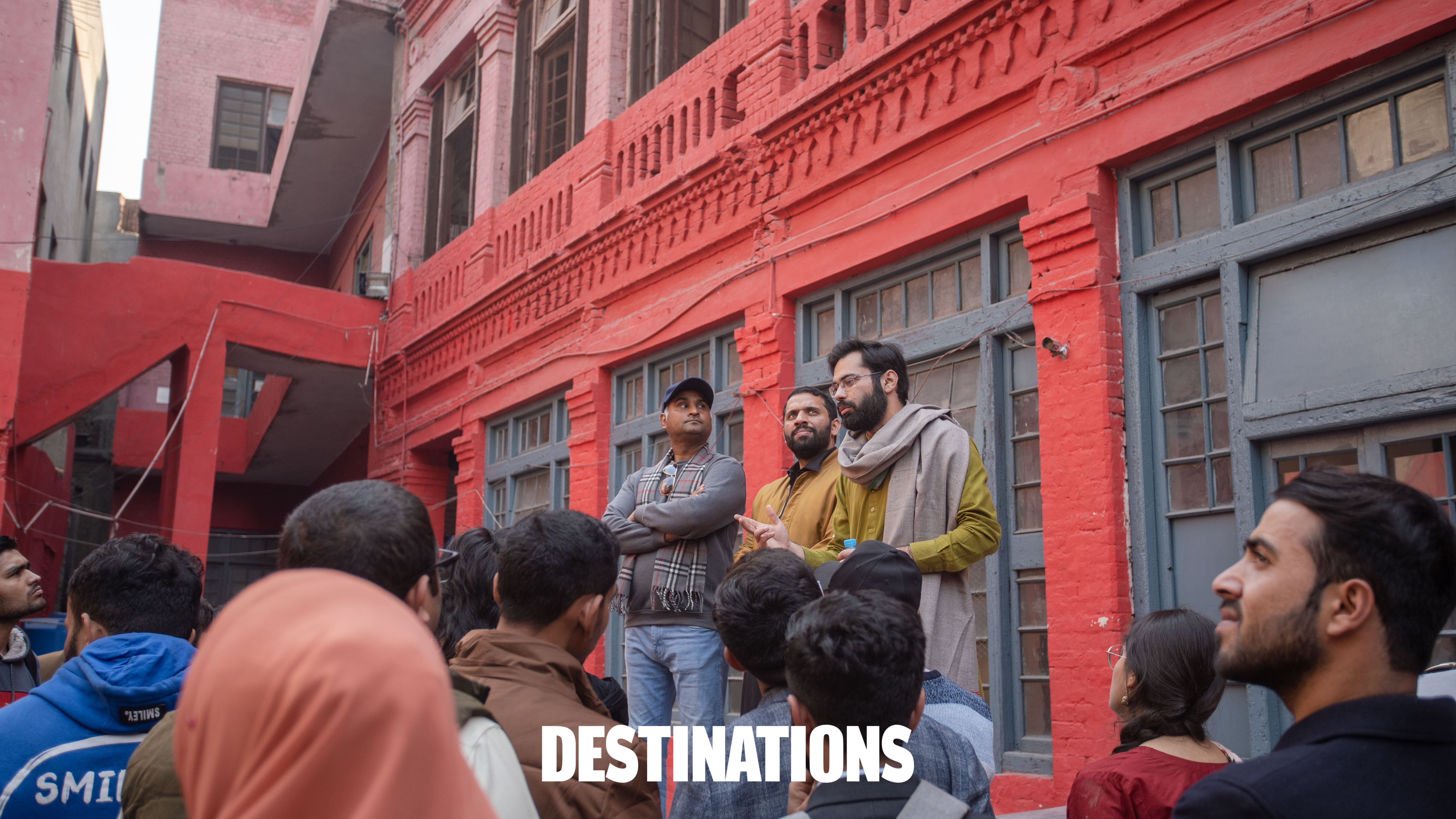
The ‘Vlogumentary’ format
In a world where borders often divide, history has the power to unite. For Zahid, the visionary behind the Vlogumentary, which is a mix of vlogs and documentary, heritage isn't just about dusty artifacts and crumbling ruins—it's a living testament to the shared past that binds nations together. Zahid's journey into the world of heritage preservation began with a simple yet profound realization: the importance of documenting the stories of families affected by the partition.
"In the tapestry of history, the threads of partition run deep," Zahid reflects, his eyes alight with passion. "It's not just about preserving old buildings; it's about honouring the memories of those who lived through one of the most tumultuous periods in our shared history."
Zahid's mission to document the heritage of partition-affected families isn't just about nostalgia—it's about fostering understanding and empathy across borders. "When we understand each other's stories, we realize that beneath the surface, we're not so different after all," he explains. "Through heritage, we can bridge the divides that separate us and build a future rooted in mutual respect and understanding."
But Zahid's journey didn't begin with partition—it started with a deep-seated passion for history and culture. "Heritage is the fabric of our identity," he asserts, his voice resonating with conviction. "From the majestic monuments of the Mughal era to the ancient ruins of the Indus Valley civilization, every stone tells a story—a story that deserves to be heard and preserved for future generations."
Driven by this passion, Zahid embarked on a four-year journey through his vlogumentary platform, exploring the rich tapestry of Pakistan's heritage. "I wanted to show people the beauty and diversity of our country's history," he explains. "But it was after stumbling upon a property in Pakistan that the significance of the partition truly hit home."
Through his viral documentary on the Indo-Pak property, Zahid shed light on the untold stories of families torn apart by partition—a narrative that struck a chord with millions around the world. "It was a turning point for me," he admits, a hint of emotion in his voice. "I realized that heritage isn't just about the past—it's about building bridges for the future."
For Zahid, the importance of showing heritage and history, especially those related to India and Pakistan, goes beyond mere preservation—it's about forging connections, fostering empathy, and building a brighter tomorrow. And through his vlogumentary platform, he continues to inspire others to join him on this journey of discovery and reconciliation.
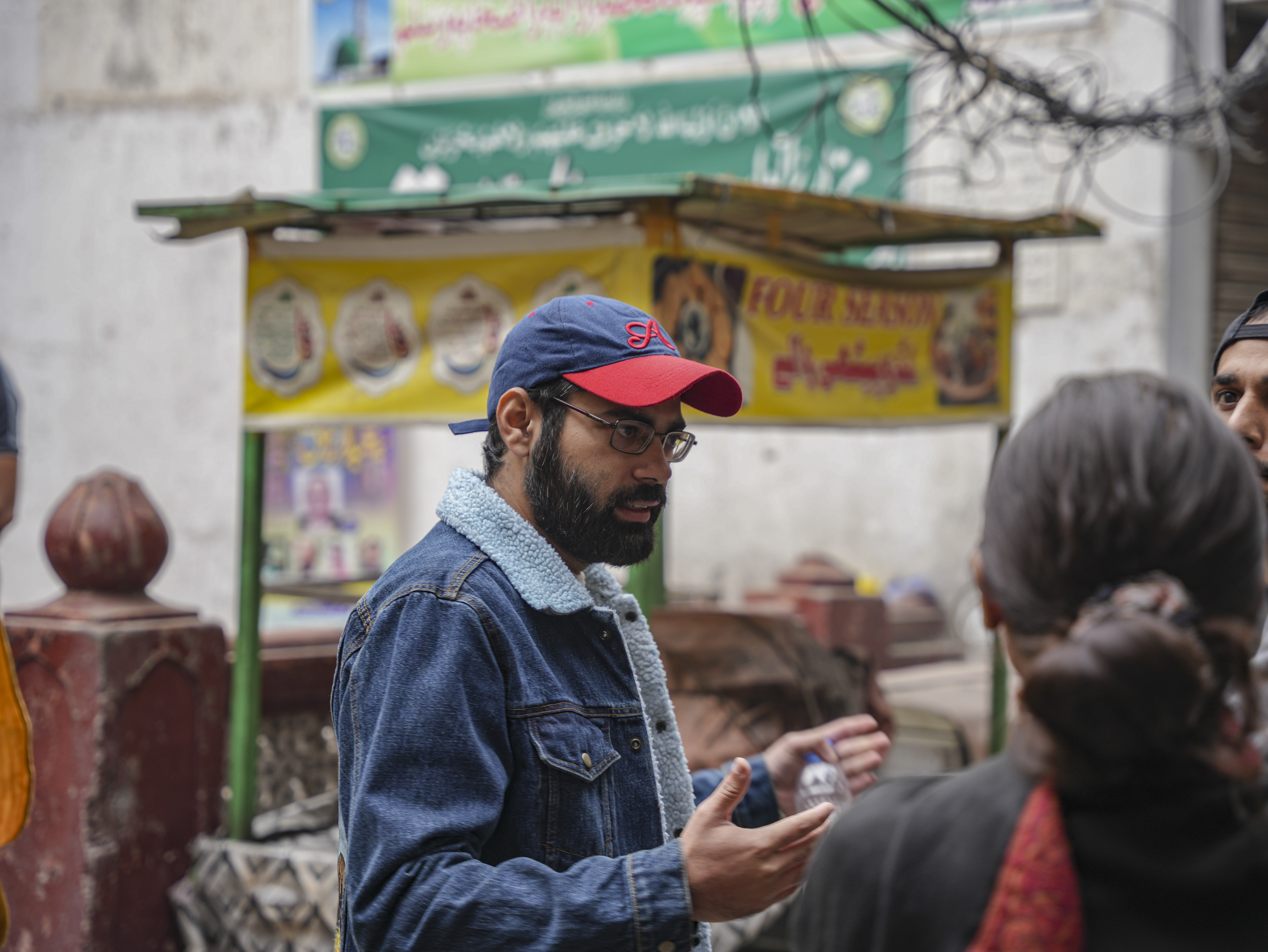
Preserving the heritage and history of properties affected by Partition is of utmost importance, emphasizes Zahid. He states, "It is very important, not only partition, but apart from partition, we talk about the Mughal era, the Iranian period." Zahid's perspective extends beyond Partition, recognizing the cultural richness woven into Lahore's tapestry by various communities over the centuries. He asserts, "In Lahore, buildings were made by Muslims, by Sikhs, by Hindus, so it should also work for them."
Zahid's passion for heritage preservation stems from his belief in its multifaceted benefits. He highlights, "We should remain attached to the past, the past teaches us a lot, it makes our decision-making easier." For Zahid, heritage isn't just about nostalgia; it's a strategic asset with immense potential. He says, "When we talk about Pakistan's debts, if we attach that heritage with tourism, it's a billion-dollar industry." Zahid is eager to leverage heritage as a catalyst for economic growth, expressing his readiness to provide a master plan to address socio-economic challenges.
In Zahid's vision, heritage preservation isn't just about safeguarding relics; it's about fostering understanding and peace. He says, "There is a need to show peace to the world." Through his vlogumentary platform, Zahid endeavors to showcase Pakistan's rich cultural heritage, bridging divides and promoting cross-border understanding.
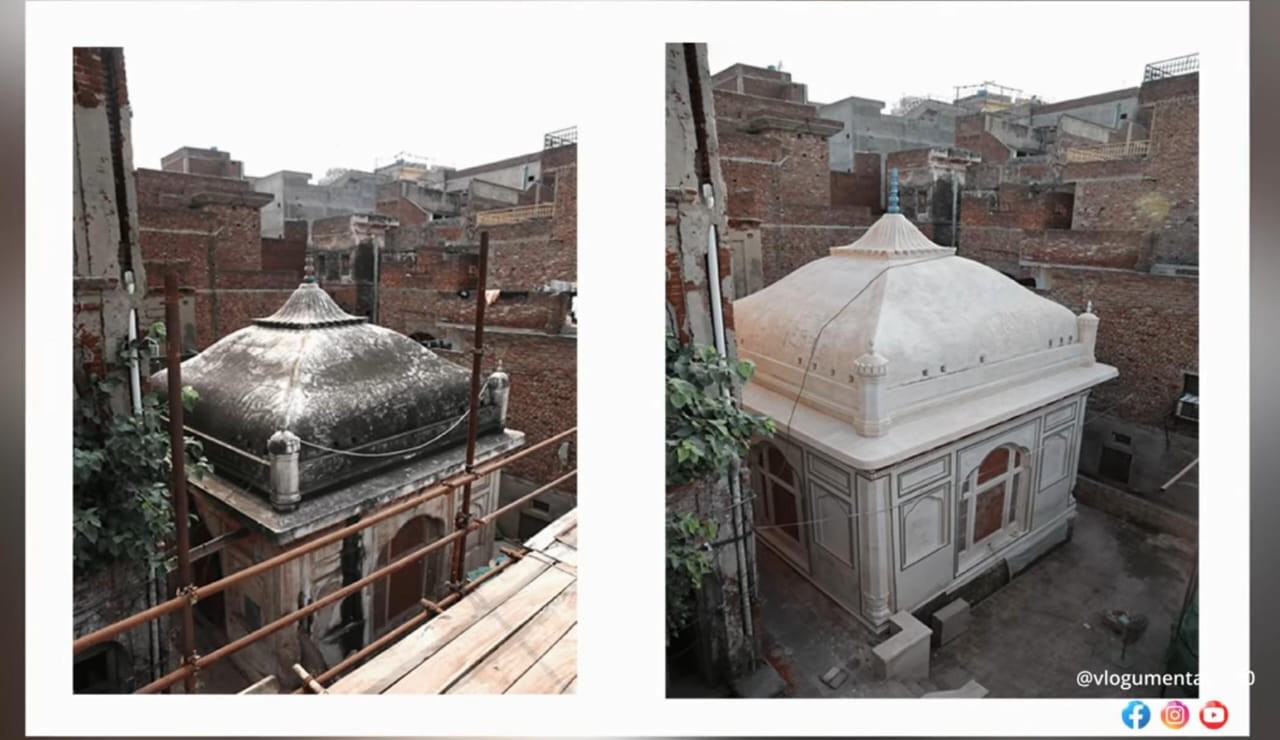
From hobby to passion to purpose
What began as a hobby soon transformed into a passion—a passion that captured the hearts and minds of millions across borders. Zahid's journey from a curious explorer to a dedicated heritage preservationist reached its zenith with the viral sensation surrounding the discovery of Sardar Mohan Singh's mansion in Indo-Pak.
"It's surreal to think about how a random exploration led to such a monumental discovery," Zahid reflects, his eyes sparkling with excitement. "But it was more than just stumbling upon an old mansion—it was a revelation, a reminder of the untold stories hidden within the layers of Lahore's history."
For Zahid and his friend Dewas, the journey to uncover Sardar Mohan Singh's mansion wasn't just about documenting a forgotten property—it was about connecting with the past, unraveling the mysteries of partition, and bridging the divides that separate nations.
"We didn't set out to make a viral video," Zahid explains, a smile playing on his lips. "But when we stumbled upon the nameplate bearing the inscription of Sardar Mohan Singh from 1929, we knew we had stumbled upon something extraordinary."
As Zahid cleaned the dust from the nameplate, revealing the faded letters etched in history, Dewas captured the moment on camera—a moment that would soon captivate the imaginations of millions. "It was a labor of love," Zahid recalls. "And when we shared the video on social media, the response was overwhelming."
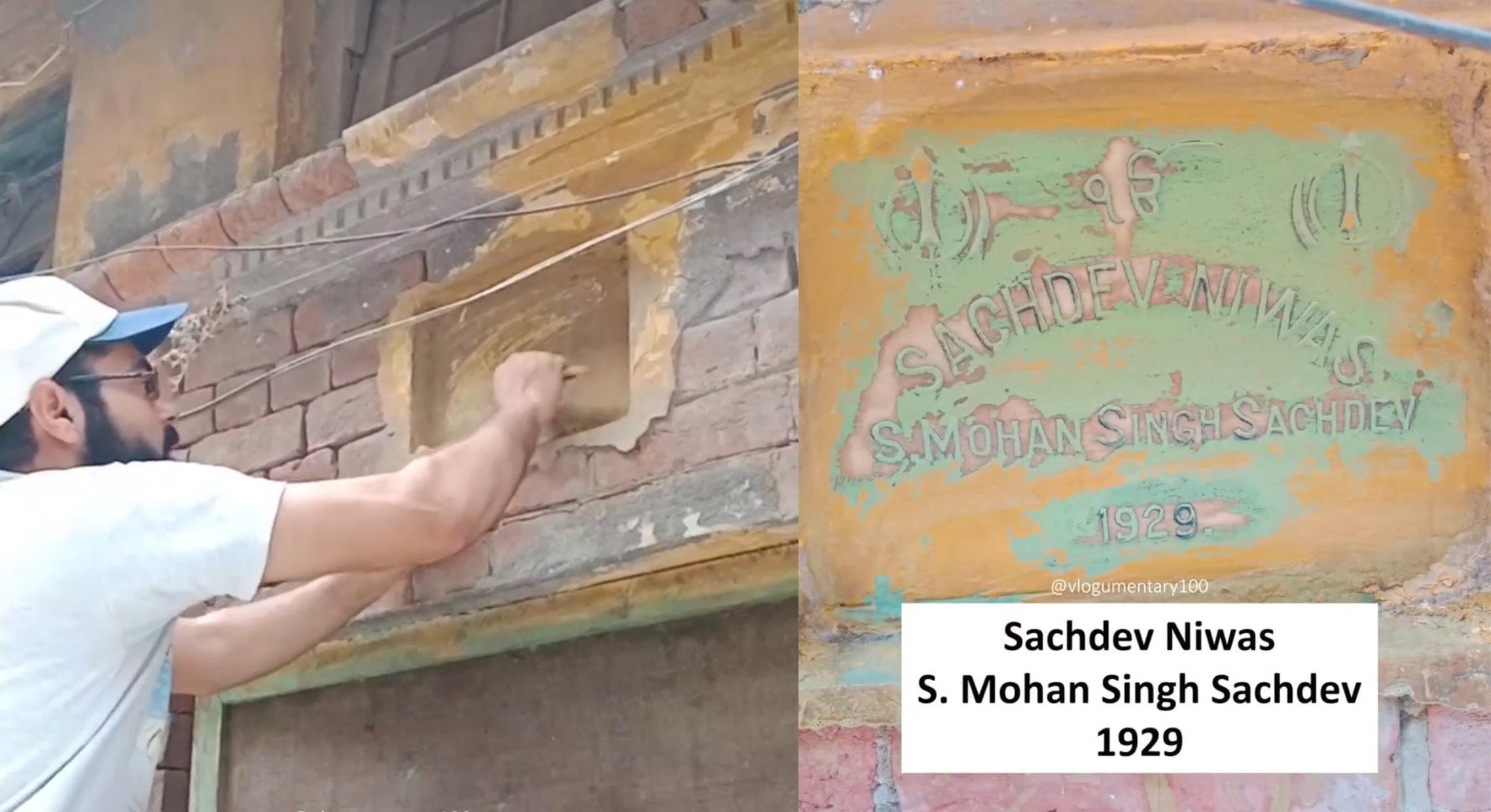
The viral success of the Sardar Mohan Singh documentary marked a turning point in Zahid's journey—a validation of his passion for heritage preservation and a testament to the power of storytelling in bridging cultural divides.
For Zahid, the impact of his documentary work extends far beyond the confines of social media metrics—it resonates deeply with the emotional chords of individuals whose lives are intertwined with the stories he uncovers. The response from the community, both locally and internationally, has been a testament to the power of heritage to evoke profound emotions and forge connections across borders.
"When I receive messages and comments from viewers, sharing their personal stories and experiences, it's a humbling reminder of the importance of the work we do," Zahid reflects, adding that it's moments like these that remind him why he do what he does. "The documentary on Sardar Mohan Singh's mansion touched the lives of millions, but it was the story of a family from India that truly encapsulated the impact of our work."
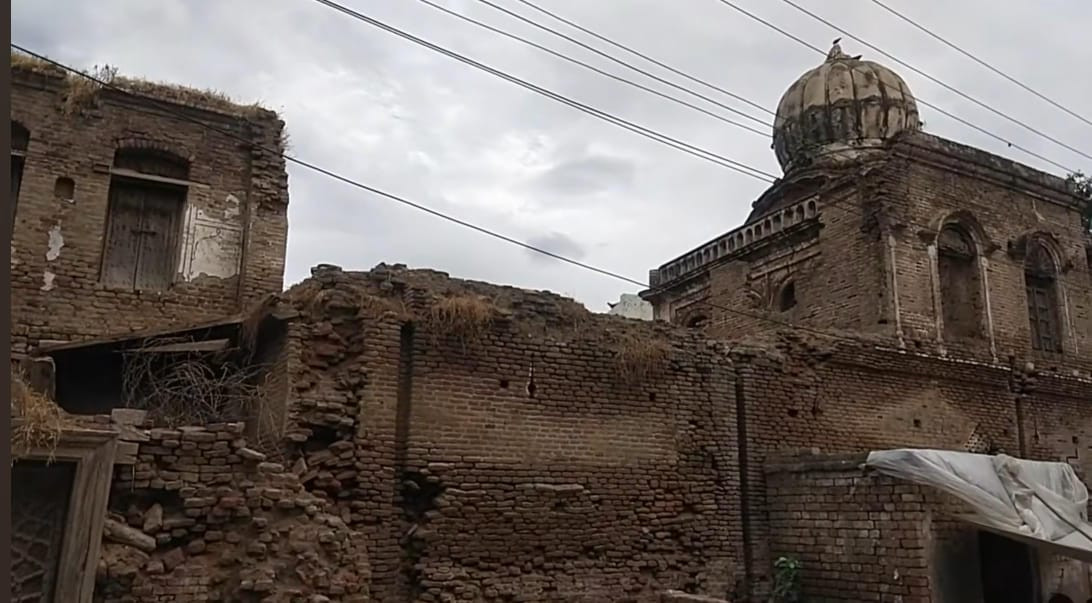
Zahid recounts the heartfelt message he received from a member of the family who had once called the mansion home. "When the family, of the guy who requested me to explore the property, watched the documentary, it was as if they were transported back in time," Zahid recalls. "For one elderly lady, seeing the place where she spent her childhood brought tears of joy and longing. It was a moment of closure, a fulfillment of a lifelong wish."
It's these moments of raw emotion that fuel Zahid's passion to delve deeper into the annals of history, to uncover the untold stories that lie hidden beneath the surface. "When you see the impact your work has on people's lives, it's impossible not to be moved," he admits. "Their words of gratitude and their tears of remembrance are what drive me to continue exploring, documenting, and preserving our heritage."
1711841315-6/WhatsApp-Image-2024-03-29-at-5-35-34-PM-(1)1711841315-6.jpeg)
Changing perceptions
Zahid's vlogumentary platform has become more than just a medium for documenting history—it's a catalyst for change, reshaping perceptions and fostering understanding across borders. Zahid's heartfelt reflections highlight the transformative power of heritage in bridging divides and nurturing a sense of unity among diverse communities.
"For me, the greatest reward is knowing that our work is changing perceptions," Zahid explains. "Many people used to see Pakistan through a lens of fear and misunderstanding, but through our videos, they're seeing a different side of our country—a side rich in history, culture, and diversity."
Indeed, Zahid's collaborative efforts with individuals like Mani Singh have garnered millions of views across platforms, captivating audiences with stories that transcend religious and cultural boundaries. "When people watch our videos, they're not just seeing a Pakistani boy exploring heritage sites," Zahid observes. "They're seeing a shared heritage—a heritage that belongs to all of us, regardless of nationality or faith."
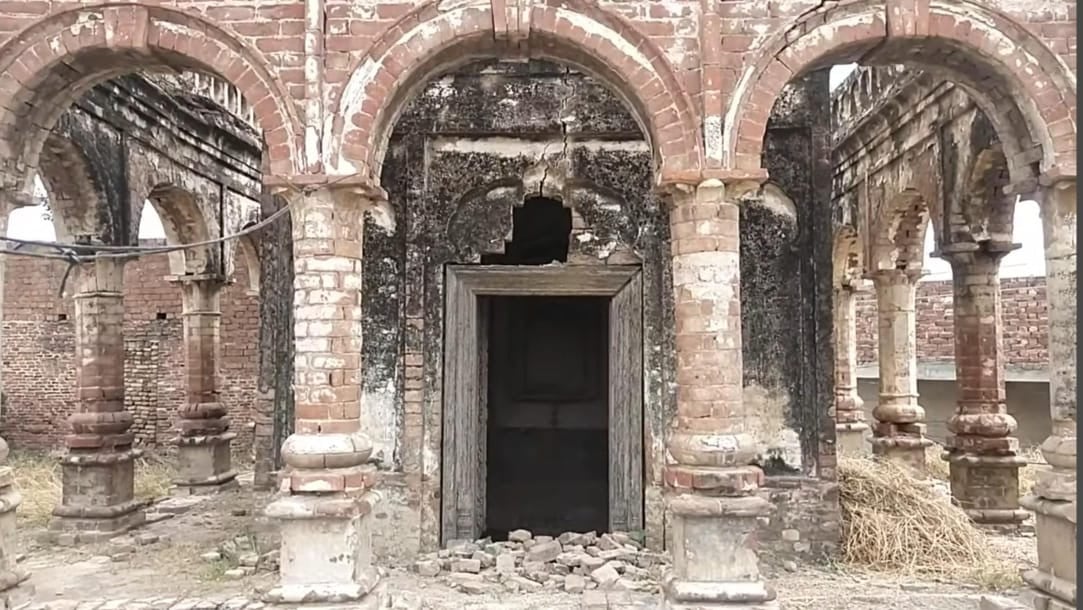
But Zahid's message extends beyond mere appreciation—it's a call to action for every community to take ownership of their heritage sites and play a role in their preservation. "Seventy-five years is a long time," Zahid reflects, acknowledging the challenges of maintaining historical properties. "But just as Muslims preserve mosques and Hindus preserve temples and Christians preserve churches, it's our collective responsibility to safeguard our shared heritage."
Zahid's vision is one of inclusivity and collaboration, where individuals from all walks of life come together to ensure that future generations can continue to cherish and learn from the treasures of the past. "We need to raise awareness and inspire action," Zahid asserts. "Our Lahore's buildings are starting to be restored, but it's up to each of us to do our part in preserving the legacy of our ancestors."
Through his unwavering dedication and impassioned advocacy, Zahid is not just documenting history—he's rewriting the narrative, one video at a time. And as his message spreads far and wide, it serves as a beacon of hope for a future where heritage unites us all, transcending borders and divisions with the timeless power of storytelling.
1711841314-7/WhatsApp-Image-2024-03-29-at-5-35-34-PM-(2)1711841314-7.jpeg) Bridging borders for future generations
Bridging borders for future generations
Zahid's dedication to preserving heritage isn't just about safeguarding the past—it's about ensuring a legacy for future generations and fostering connections that transcend borders. His insightful reflections underscore the pivotal role of history in bridging the gap between India and Pakistan, creating avenues for mutual understanding and collaboration.
"For me, heritage is a collective treasure, a bridge that unites both countries," Zahid muses. "Through heritage, we can build connections, dispel misconceptions, and forge stronger bonds between India and Pakistan."
Zahid's ability to attract a predominantly Indian audience speaks volumes about the universal appeal of heritage and its power to transcend political divides. "It's heartening to see people from across the border engage with our shared history," Zahid acknowledges. "Their interest and appreciation reaffirm the importance of our work in fostering connections between our nations."
1711841314-9/WhatsApp-Image-2024-03-29-at-5-35-35-PM-(1)1711841314-9.jpeg)
The collaborative video featuring Mariam Zamani Mosque in Lahore and its counterpart in Agra show the Mariam Zamani Tomb in the same video exemplifies Zahid's commitment to cross-border cooperation and cultural exchange. "Working with my counterpart in India was a truly enriching experience," Zahid recalls. "The video resonated with audiences on both sides of the border, showcasing the beauty and significance of our shared heritage."
Zahid's evolution from content creator to tour guide for heritage walks in old Lahore marks a significant milestone in his journey. "I wanted to involve people more directly in the exploration of our heritage," Zahid explains. "Through guided tours, we're not just learning about history—we're experiencing it firsthand, together."
As Zahid continues to lead the charge in heritage preservation and cross-cultural dialogue, his efforts serve as a beacon of hope for future generations. "Our heritage is our legacy. By preserving it, we're not just honoring the past—we're building a bridge to the future, one step at a time," Zahid asserts.
In a world where division often dominates the discourse, Zahid's vlogumentary platform serves as a beacon of hope—a reminder that beneath the veneer of politics and borders, lies a shared humanity bound together by the threads of history and heritage. And as long as there are stories left untold, emotions left unspoken, Zahid remains committed to his mission—to bridge divides, foster understanding, and celebrate the rich tapestry of our collective past.
For Zahid, the hype surrounding the Sardar Mohan Singh documentary was more than just a fleeting moment of fame—it was a reaffirmation of his purpose, a call to continue exploring, documenting, and preserving the rich tapestry of Pakistan's heritage for generations to come.
